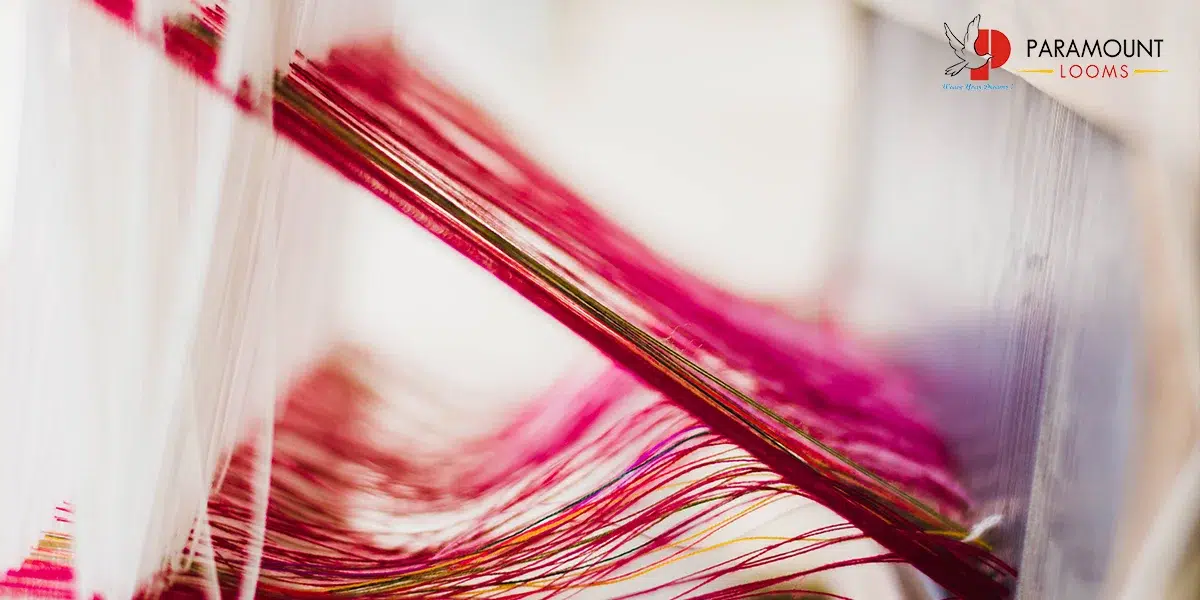
Silk, often referred to as the “queen of fabrics,” has captivated civilisations for centuries with its luxurious feel, natural sheen, and unparalleled beauty. The intricate process of weaving silk fabric involves precision and expertise.
This blog serves as a comprehensive guide, unravelling the mysteries of silk fabric—its production process, weaving mechanisms, benefits, and diverse applications.
What is Silk Fabric?
Silk fabric is a textile material produced from the fibres spun by silkworms during their cocoon phase. Coveted for its softness, sheen, and hypoallergenic properties, silk has been synonymous with great wealth and refinement across cultures and eras.
How is Silk Fabric Made: Weaving Mechanism
The production of silk fabric involves several intricate steps:
1. Silkworm Cultivation:
The process begins with the cultivation of silkworms. Mulberry silkworms are the primary species used in silk production. These worms are fed exclusively on mulberry leaves, contributing to the quality of the silk fibres they produce.
2. Silk Harvesting:
Once the silkworms mature and spin their cocoons, the silk threads are carefully harvested. Each cocoon can yield a continuous silk thread of substantial length.
3. Boiling and Degumming:
The harvested silk threads are boiled to soften the sericin, a natural protein that binds the silk threads. This process, known as degumming, prepares the silk for weaving.
4. Reeling:
The softened silk threads are then reeled onto spools. This delicate process ensures the preservation of the thread’s integrity and length.
5. Spinning:
The reeled silk is twisted to create a more strong and workable yarn, ready for the weaving process.
Types of Weaving Machines Used in Silk Fabric Production
The weaving of silk fabric involves specialised machines that cater to the delicate nature of silk fibres. Paramount Looms, a leading name in textile machinery, provides state-of-the-art weaving solutions for silk fabric production.
1. Rapier Looms:
Rapier looms are widely used in silk fabric production due to their precision and versatility. The rapier mechanism facilitates the insertion of the weft yarn with minimal stress on the delicate silk fibres.
2. Air Jet Looms:
Air jet looms are known for their high-speed operation, making them suitable for silk weaving. The non-contact weft insertion technology minimises the risk of damage to the delicate silk threads.
3. Water Jet Looms:
Water jet looms utilise a water-based weft insertion system. While not as common in silk weaving as in other textile processes, they find applications in specific silk fabric types.
Benefits of Silk Fabric
Luxurious Feel:
Silk is renowned for its luxurious, smooth texture, providing unparalleled comfort when worn.
Natural Sheen:
The natural sheen of silk lends an elegant and lustrous appearance to the fabric, making it a preferred choice for high-end fashion.
Hypoallergenic Properties:
Silk is hypoallergenic, making it an ideal choice for those with sensitive skin. It resists dust mites and allergens, promoting a healthier sleep environment when used in bedding.
Regulation of Body Temperature:
Silk fabric has natural temperature-regulating properties, keeping the body cool in hot weather and warm in colder conditions.
Moisture Absorption:
Silk can absorb and wick away moisture, contributing to a comfortable and dry feel. This property is particularly beneficial in activewear and undergarments.
How is Silk Fabric Used?
1. Apparel:
Silk is an important element in the fashion industry, gracing runways and wardrobes as luxurious dresses, blouses, and lingerie.
2. Home Textiles:
Silk is used in the production of high-end home textiles, including bedding, drapes, and upholstery, adding a touch of sophistication to interiors.
3. Accessories:
Silk is a popular choice for accessories such as scarves, ties, and pocket squares, where its natural sheen and softness enhance the overall elegance.
4. Medical and Industrial Applications:
Due to its natural properties, silk is increasingly finding applications in medical textiles and industrial uses, such as surgical sutures and airbag fabrics.
How Paramount Looms Is Going to Help Your Future
In the intricate world of silk weaving, the choice of weaving machinery is pivotal. Paramount Looms, a distinguished name in textile machinery, offers cutting-edge solutions that align seamlessly with the delicate nature of silk fabric production.
Paramount Looms is committed to providing state-of-the-art power loom weaving machines, which include rapier looms, air jet looms, and water jet looms, designed to optimise the silk weaving process. Our commitment to innovation and excellence positions us as a strategic partner for textile manufacturers seeking to elevate their silk fabric production.
Embrace the future of silk weaving with Paramount Looms – The best Power loom machine manufacturer in Gujarat, where precision meets luxury.


